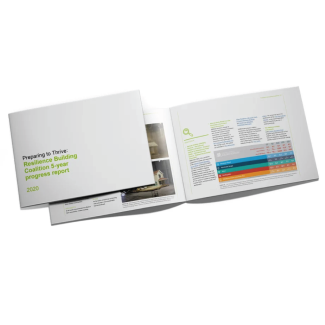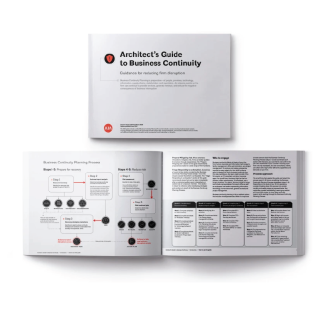Resilience
As the effects of climate change become more tangible and urgent, resilient design becomes crucial for establishing secure, healthy, sustainable communities. Use AIA’s resources, best practices, education, and information to design resilient, adaptable communities that effectively recover from extreme weather, population growth, man-made disasters, and more.

Explore the foundations of resilience
Addressing our rapidly changing climate and other hazard risks starts with how you practice. AIA's resilience initiative helps architects design climate-adaptive solutions that reduce harm and property damage, adapt to evolving conditions, and ensure communities recover from adverse events more effectively and efficiently.
Through partnerships and collaborations with federal agencies and global organizations like the Resilience Building Coalition, AIA is investing in research, education, advocacy, planning, and response to help architects design resilient, adaptive communities.
The following resources cover terminology, principles, and methods to help you design for resilience and incorporate risk awareness, hazard mitigation, and climate adaptation into client and colleague conversations.
Resilience essentials
Learn about programs and resources that can help you incorporate resilience measures while designing and planning for the future.
This nationwide network of architects and AIA members assists communities before and after disasters. It trains architects to mitigate, prepare for, respond to, and recover from disasters in alignment with federal frameworks.

AIA’s Resilient Project Process Guide helps architects and designers integrate resilient and climate-adaptive solutions into their design process.
Access dozens of courses and a certificate program on resilient design, climate risk, the U.S. Climate Resilience Toolkit, mega-projects, recovery, vulernability assessments, SAP training, and more.
The foundations of resilience
- Understanding Resilience: This resource defines basic resilience-related strategies and terms, such as mitigation, adaptation, hazard, risk, and vulnerability.
- Center for Communities by Design: Design Assistance Teams help local communities build effective strategies to address climate change, equity, housing, and a host of other challenges.
- AIA Resilience & Adaptation Certificate Series: Do you want to integrate resilience into your firm's design services? This exclusive multi-course series explores strategies for hazard mitigation, community resilience, adaptation, responding to climate change, and more. Perfect for mid-career professionals.
Best practices in hazard mitigation & community resilience
The challenges of growing disaster risk are complex and demand design innovation. These case studies and strategies for hazard mitigation, climate adaptation, and community resilience will help you tackle the shocks and stresses that prevent communities—and clients—from thriving.
- Key regional climate issues: A guide for architects to drive change: This resource leverages the Fourth National Climate Assessment to identify key climate issues as well as resources for 10 regions using two scenarios.
- Hazard and Climate Risk: A user’s guide intended to support the architect and client to reach and document a mutual understanding of hazard and climate risk that will inform project requirements

Extreme weather events are increasing in intensity and frequency. Explore resources to support hazard mitigation and hazard risk reduction for a variety of extreme weather events, including floods

Explore climate change design resources and projection tools to help buildings and communities handle and adapt to climate change effects like extreme heat and sea level rise.




